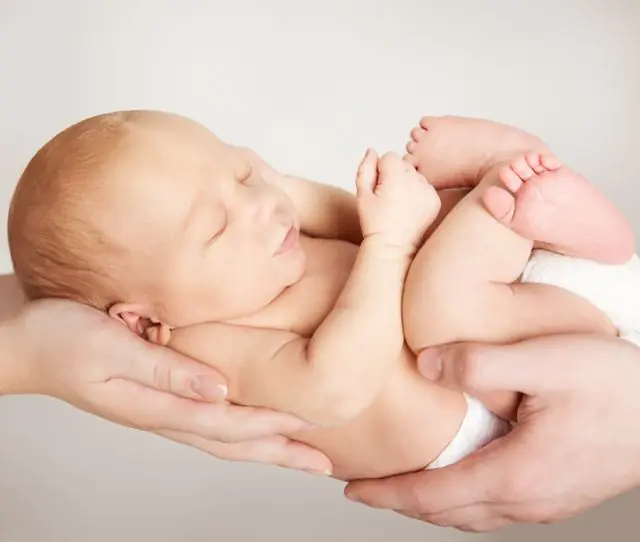
- Reasons for appearance
- What do papillomas look like on the chest of a newborn?
- Treatment of skin growths
- Removal of papillomas
- Features of prevention
Papilloma on the chest of a newborn is a benign epidermal neoplasm, which is extremely rare in babies, but when it appears it causes a lot of inconvenience. It can be of different types, and hence different shapes, sizes and colors. But the cause of papilloma is always a harmful virus that attacks cellular structures and causes the proliferation of mutated cells.
Causes of neoplasms
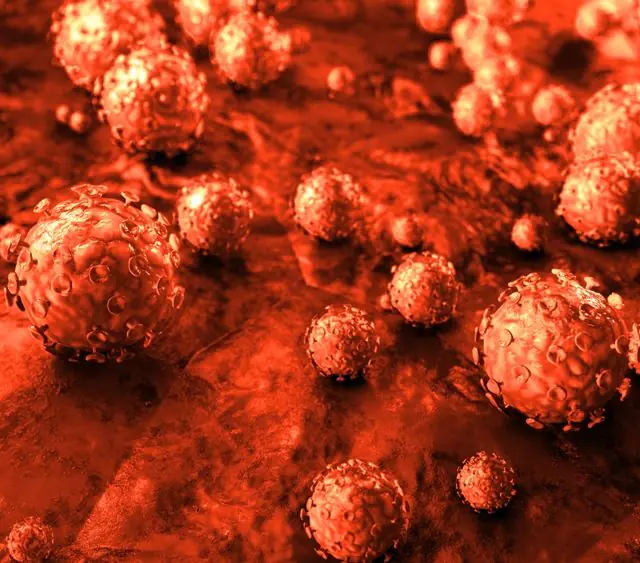
The appearance of papillomas on the chest of newborns is considered a rare phenomenon. And the first thing parents should do when they discover a tumor on a child’s body is to consult a specialist, since often the pathogenic growth is not a papilloma, but a nevus (mole), molluscum contagiosum, melanoma or a congenital skin defect.
Since one of these diseases is more often diagnosed in newborns, the appearance of papillomas is painful for parents, especially if they are faced with this problem for the first time. Ignorance breeds panic, while this virus, although unpleasant, rarely poses a threat to the life of a child.
It is necessary to begin treatment of papillomas in newborns with an understanding of how they formed, because thanks to this, a number of measures can be taken to eliminate existing tumors and prevent the appearance of new ones.
The only reason for the appearance of papilloma on the chest of a newborn is infection of the body with the human papilloma virus. No matter how sad it is, neither children nor adults can completely cope with the virus. Once it enters the body, it remains there forever. For most of its life it is in a dormant state, and is activated only after the onset of provoking factors. This activation leads to the appearance of epidermal neoplasms. Let's consider how a newborn can become infected with this virus.
Ways a child can become infected with papillomavirus:
- From mom to baby. This infection can occur in several ways. First of all, intrauterine infection is possible. Some doctors reject information that a child can pick up the papillomavirus from its mother in the womb, at the fetal stage. But the fact that some children are born with already formed papillomas suggests that intrauterine infection is still possible. It is also supported by the fact that papillomas are diagnosed in newborns born by caesarean section. Another way of transmitting the virus from mother to child is through the passage of the birth canal affected by neoplasms. While children born as a result of cesarean section do not have contact with infected birth canals. And this also indicates the ability of the virus to infect the baby inside the womb.
- Home infection. This implies close epidermal contact of the newborn with the infected person. Transmission of the virus through common household items is also possible, since the pathogen, capable of penetrating and actively multiplying in the body of a newborn, retains its viability outside the human body for more than 3 hours.
- Hospital infection. This can happen both in the maternity hospital where the baby was born, and in a children's medical institution where the child is taken for examination. In this case, the appearance of papillomas can be triggered by skin contact with untreated hands of doctors, reusable medical instruments, and changing supplies.
If a child has already been born with papilloma, then this type of growth is considered congenital, and if the neoplasm appears between the first and fourth weeks of life, such a growth is called acquired.
What do papillomas look like on the chest of a newborn?
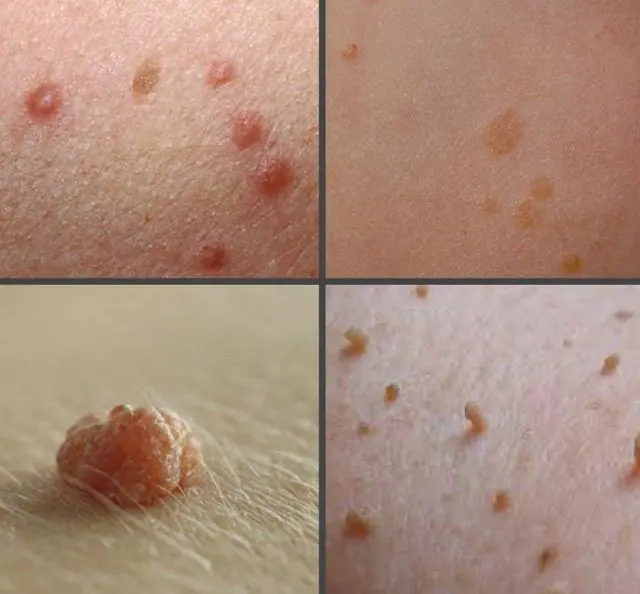
Photo of papillomas on the chest of a newborn
After entering the body, the virus has a detrimental effect on cellular basal proteins. Causes mutation of cells and their active reproduction, as a result of which papillomas appear. Children born with a weak body, premature babies, or those who have undergone any drug therapy after childbirth are especially susceptible to this.
Let's look at the types of papillomas on the chest of newborns:
- Filiform papillomas. In adults they can form in groups, but in newborns they do not have time to grow into multiple areolas. They are represented by thin soft growths that are easily separated from the epidermis, including during hygiene procedures and friction of clothing against the skin. This is very dangerous, especially for a newborn, since detachment of this neoplasm can cause severe pain, bleeding, and cause infection and inflammation. These growths are often congenital rather than acquired during the postnatal period.
- Flat warts. They are dense formations on the skin. They protrude only slightly above the surface of the epidermis. They fit tightly to the skin, and are not attached to the leg, like thread-like ones. Most often they are located on the face, but can also be on the chest of a newborn. Their danger is that they cause itching and cause discomfort to the baby, which he cannot cope with. At the same time, in the absence of swaddling, the child can accidentally tear the tumor, which can cause it to become inflamed and cause a bacterial infection.
As mentioned above, papillomas can easily be confused with other epidermal defects, so it is extremely important to show the child to a qualified specialist. It is necessary to start with a pediatrician, but it would not be amiss to consult a dermatologist using a dermoscopic examination. The doctor may also prescribe a PCR screening test to determine the type of virus and develop a treatment regimen. Based on these data, a decision is made about observing the growth over time or the need for surgical removal.
Note! The fact that parents independently make incorrect diagnoses for their children is evidenced by the fact that photographs of papillomas in newborns on the chest, posted on dermatological forums, often depict nevi and molluscum contagiosum, rather than neoplasms caused by HPV.Treatment of skin growths
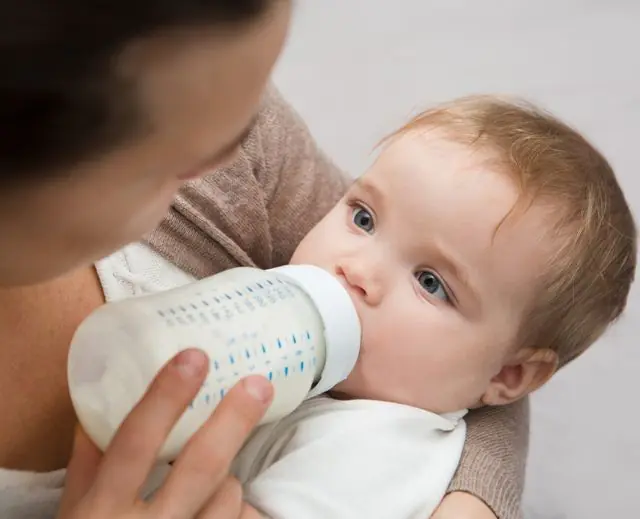
To date, there are no mechanisms for a complete cure for human papillomavirus. Throughout life, the test for the presence of the virus can be either positive or negative. It is not yet known for certain whether this HPV decreases in maximum concentration to the point of undetectability or the person is cured and then becomes infected again.
In medicine, it is generally accepted that with high immunity, the virus goes into a dormant state, and when it decreases, it again begins to actively multiply and cause cell mutation, which leads to the appearance of papillomas.
Therefore, the treatment of tumors caused by HPV comes in two directions. The first and most frequently used is the use of external medications. Their main task is to remove tumors from the surface of the skin. But, according to dermatologists, if a patient wants to achieve effectiveness in the treatment of papillomas, as well as prevent their reappearance, complex therapy is needed, which also includes antiviral and immunomodulatory drugs for internal use (oral, injection).
For newborns, which are children aged 1 to 28 days of life, both of these treatment methods are contraindicated. Therefore, the only treatment regimen that is available to parents is based on raising children's immunity. As a result of correct actions aimed at strengthening the child’s body, it is capable of self-healing, reducing the concentration of the virus and suppressing epidermal growths.
Methods of increasing immunity aimed at treating papillomas in newborns on the chest:
- Proper nutrition. Children born with papillomas or who become ill with them during the first 4 weeks of life are, by default, patients with extremely reduced immunity. Such babies need increased nutrition with mother's milk or an adapted milk formula. When breastfeeding, it is very important that the mother takes a responsible approach to the issue of her own nutrition, since her child receives everything that she herself eats. The diet of a nursing mother should include many types of cereals, vegetables and fruits, meat, and fish. It will not be superfluous to take a complex of vitamins and minerals along the way. When bottle-feeding, it is important to choose the right mixture based on the baby’s health characteristics. Reduced immunity is often characterized by a tendency to allergies. In this case, you may need a lactose-free formula based on processed goat's milk. It is very important to work in constant conjunction with the pediatrician and inform him of any changes in the baby’s condition in order to select the necessary nutritional regimen. Your child may need to take extra water. In this case, you should also give preference to high-quality prepared water, sold in special pharmacies or in children's kitchens. Normalization of nutrition is the first and most important step in the treatment of breast papillomas in a newborn child.
- Maintaining a sleep-wake schedule. Healthy sleep is the basis for proper development. Periods of sleep and wakefulness should alternate proportionally and be based on the frequency of the child's food intake. The baby should not constantly hang on his mother's chest or ask for a bottle. If the diet is regulated, and the newborn continues to show anxiety and sleep less than expected or, conversely, is constantly in a state of sleep, consult a somnologist.
- Normalization of intestinal activity. Modern doctors often say that human immunity lives in the throat and intestines. Therefore, it is important to treat a child in case of illness and pay special attention to normalizing his intestinal activity. Many parents are familiar with the concept of “tummies” - this is painful crying as a result of increased gas formation. In order to quickly cope with this phenomenon, modern pharmacists offer a number of medications, the main goal of which is to quickly populate bacteria in the newborn’s intestines and thereby speed up the process of normalizing digestion.
- Regular walks. The doctor’s advice that the more you need to walk, the better, should be taken literally. But for this, of course, comfortable conditions must be created. Firstly, the weather must be appropriate. Secondly, the child must be dressed appropriately for the weather. Both hypothermia and overheating can have an equally bad effect on his well-being. It is necessary to walk with children away from industrial enterprises, highways, hospitals, and unsanitary areas.
- Hygienic care. The advent of diapers and baby wipes has greatly simplified the lives of modern mothers. However, some go too far with the use of these hygiene products, especially wet wipes. Their use is an ambulance in cases where it is not possible to wash or bathe the baby. Children's skin is very quickly susceptible to diaper rash, rashes, and itching. Therefore, it is necessary to wash the child after defecation and urinary relaxation, and not wipe him with wet wipes. You should not wipe your neck, chest and armpits with them if you sweat excessively. It is also recommended to change diapers as often as possible. When using cloth diapers, they are replaced after each urination, and in order to save money, parents sometimes do not change diapers for 8-12 hours. This approach to ensuring child hygiene is unacceptable and contributes to the formation of papillomas in the newborn.
This set of measures is minimal, and all its points are mandatory. Only in this case can we talk about raising the baby’s immunity and strengthening his body.
- See also ways to treat warts in newborns
Removal of papillomas from a newborn baby
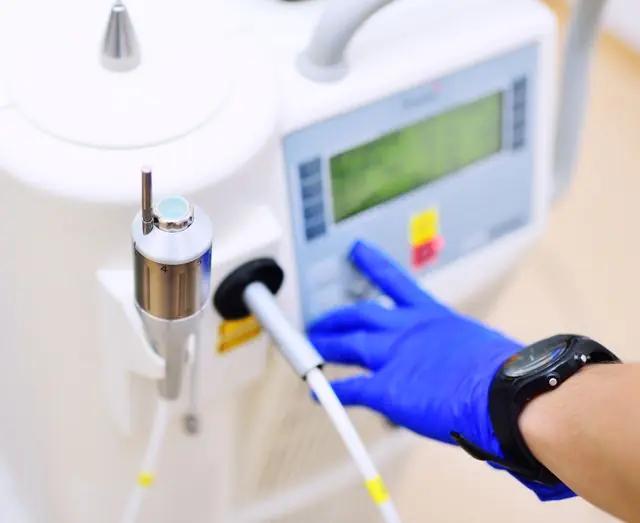
The location of papilloma on the chest of a newborn is not a condition requiring surgical intervention. As a rule, doctors recommend monitoring the tumor and making a decision on methods of eliminating it after some time, when the child not only reaches the age of a newborn, but even out of infancy, that is, after 1 year.
Reasons for urgent removal of papilloma in a newborn on the chest:
- The neoplasm rapidly changes color, acquiring a red or black tint.
- There is reason to believe that papilloma causes discomfort to the child - pain or itching.
- The pathological growth has an irregular shape.
- The tumor was torn, causing bleeding.
- The area around the epidermal growth became inflamed.
If one of these factors is present, it is better to decide in favor of surgical removal of papilloma on the chest. In newborns, this procedure is performed in two ways - surgical or laser therapy.
The first method involves removing the papilloma using a scalpel. This is a highly traumatic procedure, which may be necessary if there is a suspicion that the tumor is malignant. After excision, the tissues are sent for histological examination.
If routine removal of papilloma on the chest of a newborn is permitted, laser therapy is used. This is a low-traumatic procedure, usually performed under local rather than general anesthesia. Wound healing occurs much faster than with surgical removal, since only pathogenic cells are excised, and healthy skin remains intact.
Regardless of what type of excision will be performed, postoperative treatment of the area of papillomas in newborns is best left to doctors.
Features of prevention
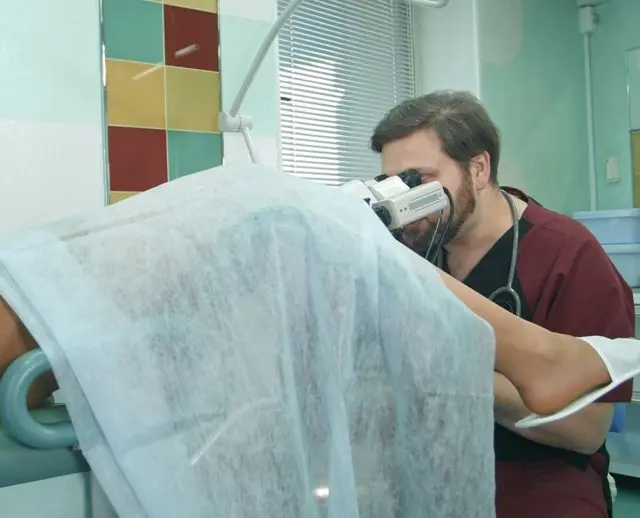
The best prevention of the formation of papillomas in babies is planning pregnancy and treating parents who are HPV carriers even before conception.
First of all, the expectant mother needs to be examined. The full course of diagnostic procedures includes a gynecological examination, cytology of vaginal and urethral smears, PCR testing and histological examination of tissue samples. After identifying the virus and determining its types, treatment is prescribed to both the woman and her sexual partner.
If papillomas form during gestation, they must be removed, since one of the main causes of growths in a newborn is infection from mother to child during delivery or subsequent lactation or coexistence.
In addition, it is worth limiting close contact between relatives and the child, strictly monitoring hygiene procedures both at home and in medical institutions, and also doing everything possible to strengthen children's immunity.
Papilloma on the chest of a newborn is a rare disease that does not pose a direct threat to the baby’s life. However, this does not mean that this condition does not require monitoring and control by parents and medical personnel. Relatives must do everything possible to help the little body cope with the virus on its own. And if this fails, you need to resort to the help of surgical medicine.
- Related article: Causes and treatment of papilloma in newborns



